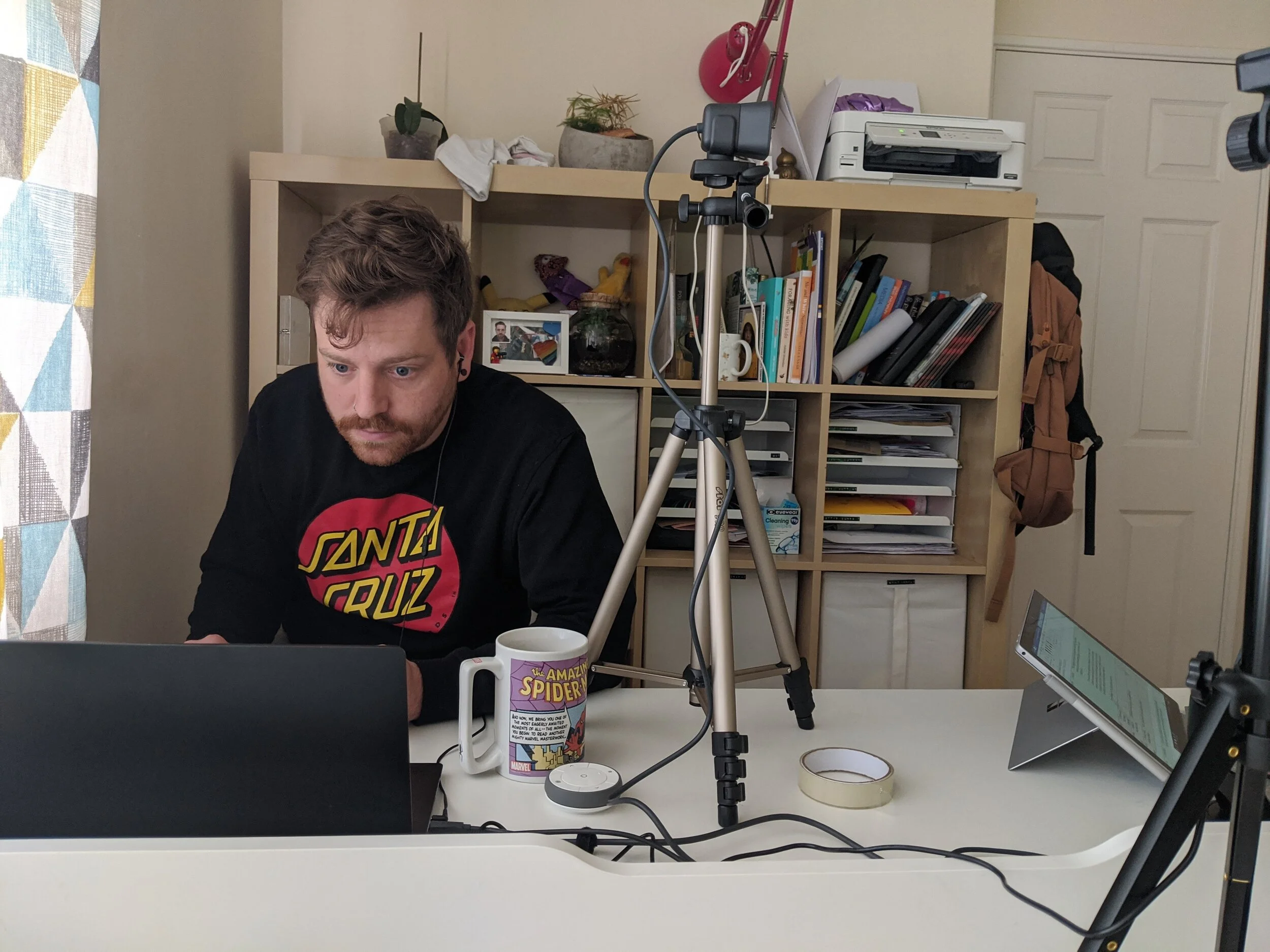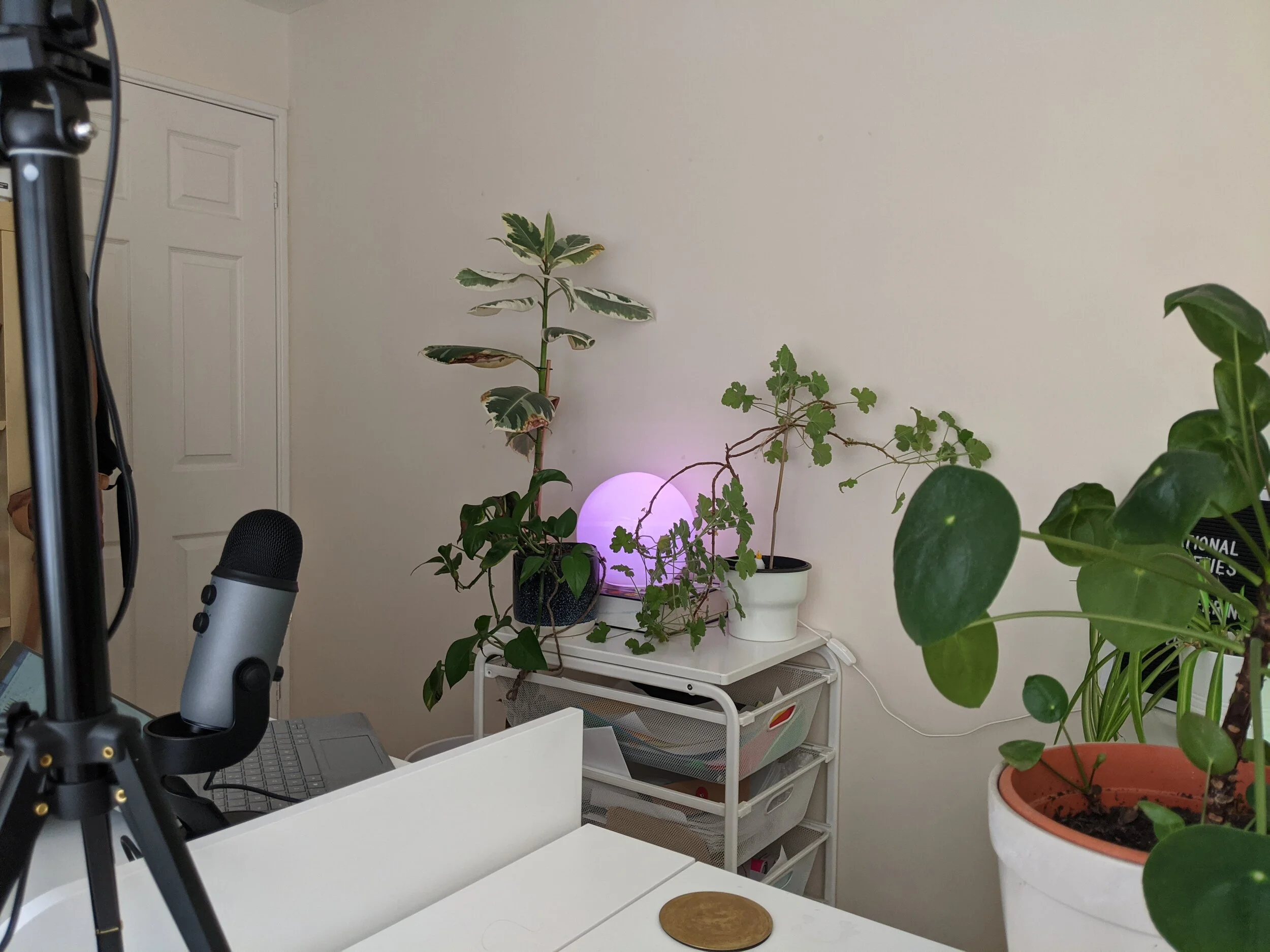Creating quality online events - how we did the NSVAs
‘Backstage’ at the NSVAs
Jamie preparing the test run of the live stream a few hours before we went live
On the 6th May Organised Fun announced the winners of the National Societies & Volunteering Awards live and direct from our home office. This is definitely not the awards ceremony we had been planning for but we couldn’t let the moment go by without a celebration. The stream was a success, we had plenty of viewers, lots of interaction and comments and, to my relief, no technical issues. After the stream we had quite a few people get in touch to ask how we did it, so I’ve written this blog.
Before the NSVAs I had never done a livestream before, so this was a learning curve. It’s worth pointing out that a stream can be as complex or as simple as you want it to be. Grab any phone with a camera and you could be going live in a few seconds time. We wanted to present something that showed a level of professionalism and had the gravitas the awards deserve. This meant that we needed to think about our hardware and what software we were going to use.
When it comes to hardware there are three main things to consider:
USB Microphone
High Quality Webcam
Lighting
It’s not as scary as you might think. You don’t need to be a really techy person. It’s really accessible, you don’t need loads of specialist equipment or complicated software. Lots of people already have this equipment available to them. You could be live within seconds using a smartphone and social media apps like Instagram and Facebook.
Having said that there are still some things that you might want to consider to make the most out of your online event:
The NSVAs scene is set
Rosie stood in front of the plants and was able to read her notes from the laptop you can see behind the microphone.
Apps are designed to be user friendly so you don’t need to be an expert to get your head around them but it is worth having plenty of practice. The more time you spend getting familiar with the layout the more you’ll be able to relax on camera and enjoy your event.
There’s something about talking on camera that makes people fluster, get your opening lines clear in your head before you start to feel more comfortable and avoid the red light fever!
If you are able to invest in hardware, improving your microphone is the first place to start. Viewers are more likely to be forgiving of low quality video than they are of sound. If you’ve still got the budget to spare, invest in a high quality webcam. But a webcam isn’t the end of the story. Lighting, composition and background make a significant difference to any livestream. Try to avoid being backlit as your face will appear dark, ideally use a window or a lamp to light your face. We got a £20 selfie light that did the job just fine.
Think about the framing of the shot and try to add visual interest and depth to the background. We built ours with plants and lamps with colour changing bulbs that we already had in the house.
Top tips for having a high-quality online event:
Great sound quality – invest in a microphone and balance the audio during test run
Picture quality – use a high quality webcam and think about the framing of your shot. Use lighting and depth of field to add interest to the shot.
Interaction - consider how you’ll interact with your audience. Reply to the comments in the stream & have a moderator in the chat. Boost the chat topics or questions to encourage interaction. Don’t forget social media interaction.
Advertise and share your scheduled stream. Make sure people know it’s happening. Tell people what to expect. Use social media to your advantage before the event to build hype.
Pre-record content to mix with live – gives you a backup if the live goes wrong and can be edited to boost quality.
Use OBS Streamlabs (or similar) to edit your pre-recorded material together and create your stream.
Practice – do a test stream to check bitrate, FPS (frames per second), etc. Tweak it.
Use your gaming society! Twitch is a huge platform with loads of gamers going live all the time. They know about this tech and how to make the most of it.
Media groups might be using this stuff too. They are likely to have access to hardware/equipment, too.
The key principles of organising an event are the same whether that’s a physical or digital event. We did a workshop about this at the Student Opportunities Festival that you can watch to learn more about designing events.
- Jamie, Organised Fun
The finished product
A screen shot of our NSVAs livestream showing our lighting and the scene we set up for the National Societies & Volunteering Awards 2020.



